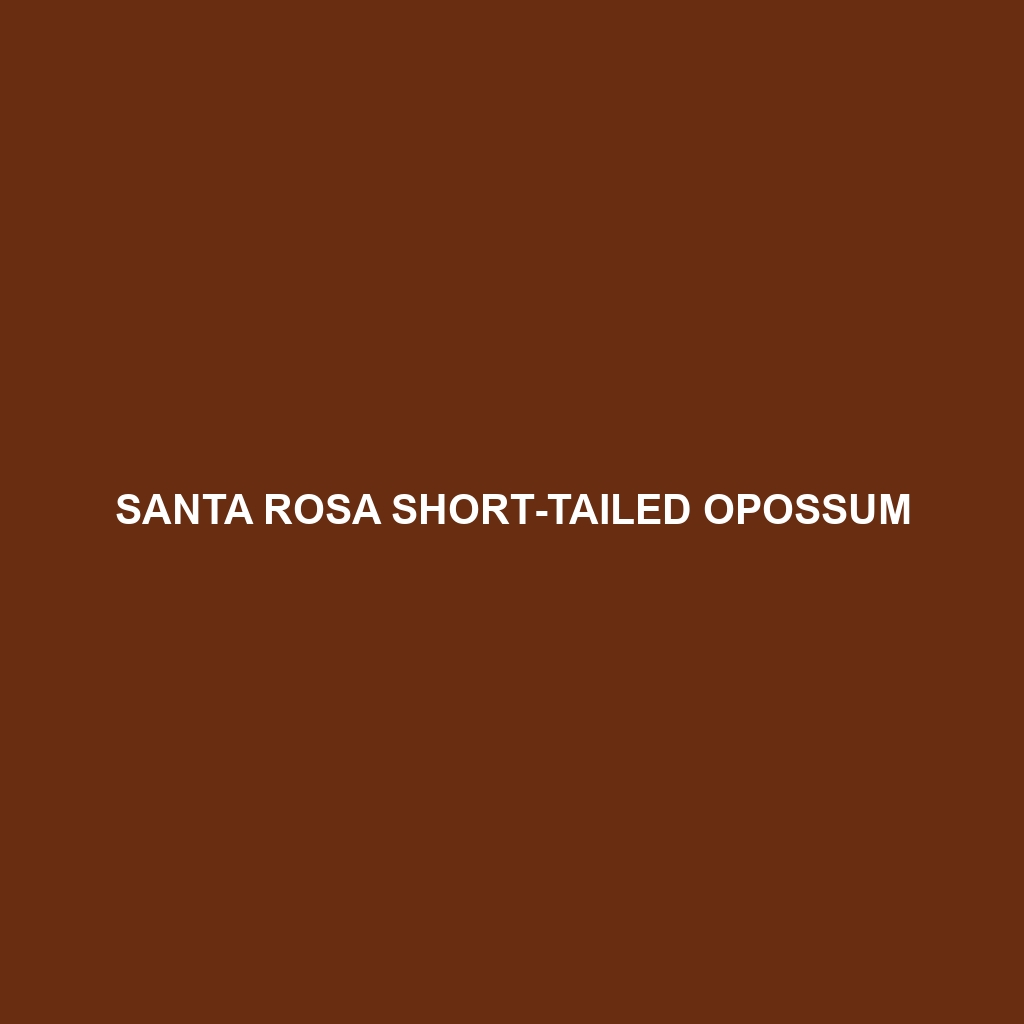Santa Rosa Short-tailed Opossum (Monodelphis sanctaerosae)
The Santa Rosa Short-tailed Opossum, scientifically known as Monodelphis sanctaerosae, is a small, terrestrial marsupial native to the tropical and subtropical regions of Central America. Known for its distinctive short tail and agile nature, this fascinating creature plays a vital role in its ecosystem as both a predator and prey.
Physical Characteristics
Size: Adult Santa Rosa Short-tailed Opossums typically measure between 10 to 15 centimeters (4 to 6 inches) in body length, with a tail length of about 5 to 7 centimeters (2 to 3 inches). They usually weigh between 30 to 50 grams (1 to 1.8 ounces).
Coloration: Their fur is generally a soft, earthy brown to gray on the dorsal side, transitioning to a lighter, often creamy or whitish color on the ventral side. Some individuals may exhibit faint, reddish-brown hues.
Special Features: True to their name, these opossums have notably short tails relative to their body length. Their tails are prehensile, aiding in climbing and balance. They possess sharp claws for digging and foraging, and their large, sensitive whiskers help them navigate their environment.
Behaviors
Social Interactions: Santa Rosa Short-tailed Opossums are predominantly solitary creatures, coming together primarily for mating purposes. They are nocturnal and exhibit crepuscular activity, being most active during dawn and dusk.
Feeding Habits: These opossums are omnivorous, with a diet that includes insects, small vertebrates, fruits, and various plant materials. They are opportunistic feeders, adapting their diet based on seasonal availability of food.
Ecological Roles: As both predators and prey, Santa Rosa Short-tailed Opossums help control insect populations and serve as a food source for larger predators. They are also important seed dispersers, contributing to the health of their ecosystems.
Habitats
Natural Environment: These opossums inhabit tropical and subtropical forests, often found in lowland and montane regions. They prefer areas with dense vegetation that offer ample cover and foraging opportunities.
Nesting: They build nests in hollow logs, under leaf litter, or in burrows abandoned by other animals. These nests provide shelter and protection from predators.
Adaptations
Camouflage: Their fur coloration helps them blend into the forest floor, providing camouflage from predators.
Prehensile Tail: Although short, their prehensile tail aids in climbing and maintaining balance while navigating through their habitat.
Nocturnality: Being active during the night reduces the risk of predation and allows them to exploit food resources without competition from diurnal species.
Conservation Status
The Santa Rosa Short-tailed Opossum is currently not listed as endangered, but like many forest-dwelling species, it faces threats from habitat destruction and deforestation. Conservation efforts are necessary to ensure the preservation of their natural habitats and to monitor population trends.
Fun Facts
Reproduction: Females can give birth to multiple litters each year, with a gestation period of around two weeks. Newborns are extremely underdeveloped and continue to grow in the mother’s pouch or by clinging to her fur.
Agility: Despite their small size, these opossums are incredibly agile and can climb trees and navigate complex terrain with ease.
Lifespan: In the wild, Santa Rosa Short-tailed Opossums typically live for about 1 to 2 years, though they can live longer in captivity with proper care.
By understanding and appreciating the unique attributes and ecological importance of the Santa Rosa Short-tailed Opossum, we can better advocate for the conservation of these remarkable creatures and their habitats.
